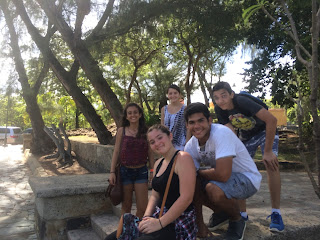 |
| Cuerpo de Guardia de Bastión de Santa Elena: This structure was built in 1787 and its purpose was to house the soldiers and officers stationed here for the defense of San Juan. |
 |
| Raíces Fountain: The Raíces Fountain lies in the middle of El Paseo De La Princesa. The statue represents Puerto Rico's Spanish, African, and Taíno heritage. |
 |
| La Rogativa: A statue of three women and a bishop during a religious procession. La Rogativa was built to represent a legendary event that helped save Puerto Rico from a British attack. |
 |
| San Jose Church: The second oldest church in the New World. San José Church was built in 1532. It is one of the earliest examples of Gothic architecture that is still relevant today. |
 |
| San Juan Cathedral: The San Juan Cathedral was built in 1521. In the cathedral lies the tomb of Juan Ponce De León. |
 |
| Tite Curet Statue: Tite Curet was a Puerto Rican composer from Guayama that worked on about 2,000 songs in his lifetime. The statue sits on a bench in the Plaza de Armas. |


























































